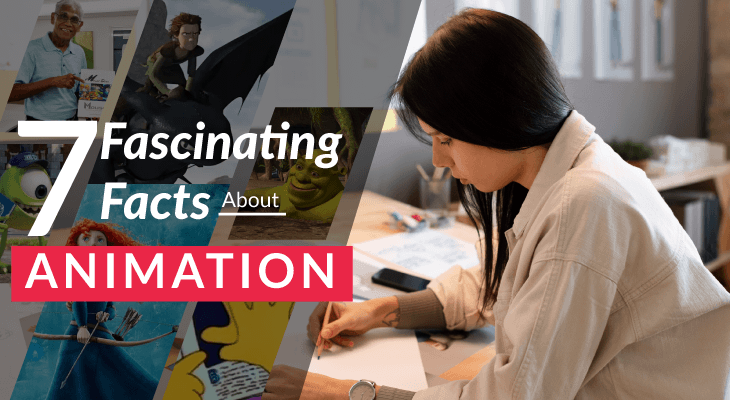The Complete Guide to Studying Design in Malaysia
Looking to study design in Malaysia? Discover the programme, its entry requirements and where it's offered with this comprehensive guide.

What makes a chair more comfortable to sit on than others? What makes you so engrossed with an animation while for others, you can’t help but reach for the remote? What about the shirt you love to wear because it gives you confidence?
The answer lies in the design.
Superior products and services may no longer provide businesses with a sustainable competitive edge – which is why more and more businesses are starting to place higher emphasis on design as great design helps them stand out among their competitors.
So, if you are contemplating taking up a Design course, zoom in, as this guide reveals what you need to know about studying a Design course in Malaysia.

Asia Pacific University of Technology & Innovation (APU)
BA (Hons) in Visual Effects
✓Dual-award degree – one from De Montfort University (UK) and one from APU
#1. The Basics of Design
a) What Is Design?
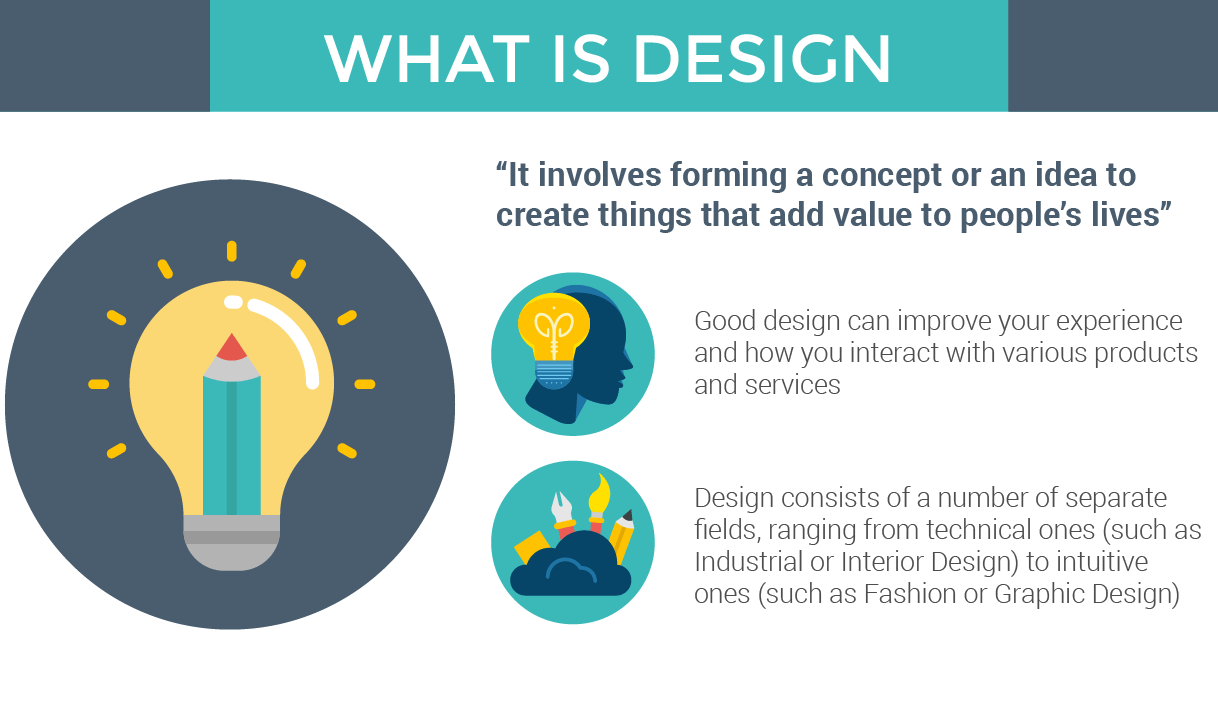
Design involves forming a concept or an idea to create things that add value to people’s lives.
From highly interactive websites and surreal animation videos to exquisite jewellery and ergonomic home furniture, good design can improve your experience and how you interact with various products and services.
Design is relatively broad and consists of a number of separate fields, ranging from the more technical ones, such as Industrial Design and Interior Design to those that are more intuitive in nature, such as Fashion Design and Graphic Design.

b) What Are the Various Fields of Design?
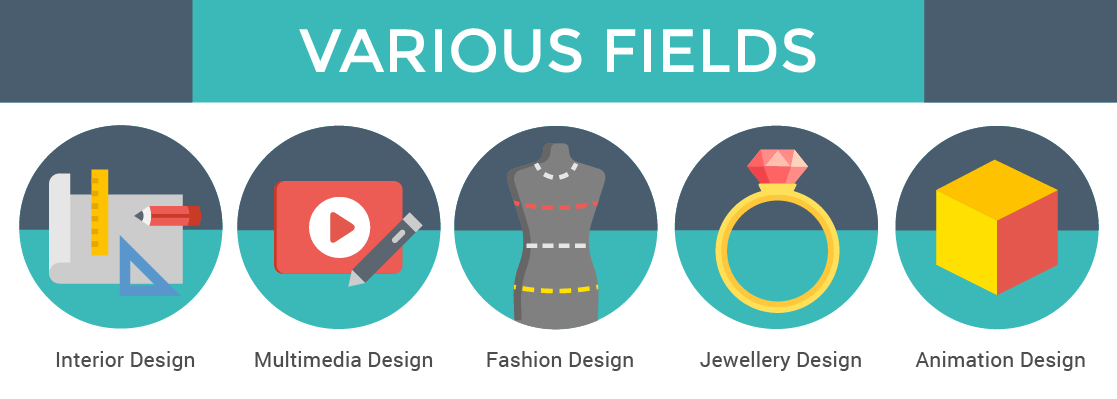
With the influence of design pretty much evident in almost everything around us, this makes design a relatively broad field.
Naturally, design is separated into different fields and, collectively, aims to create better clarity in visual communication and improve quality of life.
Here are some of the popular fields of Design.
| Field | What It Is |
|---|---|
| Interior Design | Creates improvements for interior environments to ensure the quality of life of occupants without compromising on safety and health |
| Multimedia Design | Covers multiple design areas (such as animation, graphic and website) to create highly engaging visual content that viewers can interact with |
| Fashion Design | Creates aesthetically beautiful clothing and garments to meet the demands of consumers |
| Jewellery Design | Produces shapes of saleable and finely detailed jewellery designs |
| Graphic Design | Creates compelling and easily understandable visuals through the cohesive use of typography, imagery, colour theories, etc. |
| Animation Design | Produces moving images and motion effects for movies, TV, websites and other media with skilful use of the latest animation software |
| Industrial Design | Develops products and systems for mass production that creates higher value, functionality and appearance that benefits both manufacturer and consumers |
#2. Studying a Design Course
a) Entry Requirements & Qualifications
To pursue a course in Design, you’ll need to meet the minimum requirements set by the colleges or universities.
(i) Diploma in Design
To study a Diploma in Design, you will typically need:
- SPM / O-Level: Minimum 3 credits
Some colleges / universities may also conduct a portfolio review or a visual test if you didn’t take an art-related subject in SPM.
PRO TIP
Start to collect and compile your creative works in secondary school as your portfolio. It can consist of drawings, photos, sketches or any form of media to showcase your creativity and design skills.
A Diploma in Design course is usually 2.5 – 3 years long. You will be taught the fundamentals of Design and the use of various Design software and tools.
Once you’ve completed your Design Diploma, you can either opt to enter the workforce or continue on with a relevant Design Degree.
(ii) Degree in Design
In order to pursue a Degree in Design, you would have to have completed your SPM or an equivalent qualification AND finished a Pre-University or Foundation course.
As a rule of thumb, the minimum requirements that you’re required to meet in your Pre-University or Foundation course in order to study a Degree in Design are:
- A-Level: Minimum 2Ds; or
- STPM: Minimum 2Cs; or
- Diploma: Minimum CGPA of 2.00
- Foundation in Arts or Design: Minimum CGPA of 2.00
- Asasi or Matrikulasi: Minimum CGPA 2.00
Again, certain universities will conduct their own internal assessment or review prior to accepting you into their Degree in Design.
A Design Degree is 3 – 3.5 years long, where you’ll explore the various design elements involved in depth and explore advanced use of various computer software and tools.
You will also be required to undergo internship or industry placement to further reinforce what you’ve learned in college / university.
Make it an effort to build and assemble your own design portfolio in college / university as they will be very useful for you in your job search upon graduation later.

Asia Pacific University of Technology & Innovation (APU)
APU Foundation Programme (Architecture & Design)
✓Direct pathway to dual-award design degrees at APU
b) How Does Your Education Pathway Look Like?
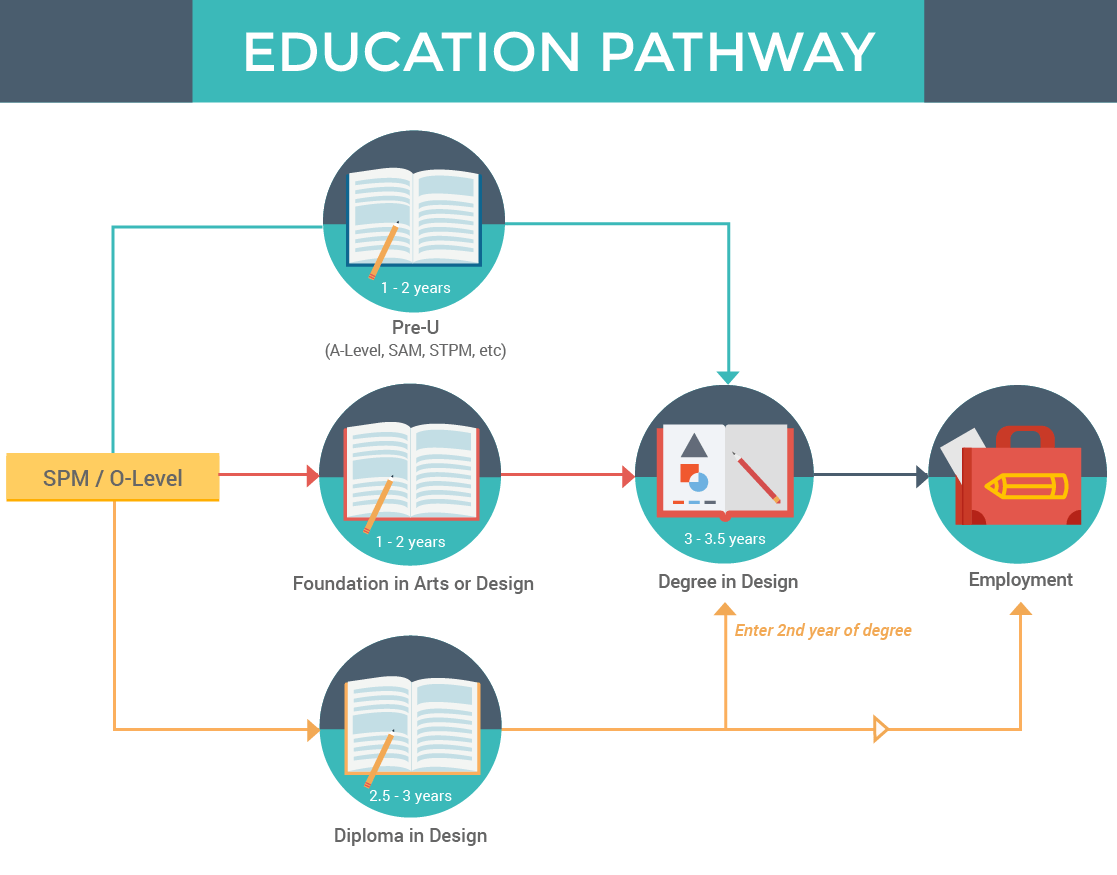
After SPM, you can choose to pursue a Pre-University course (such as, A-Level, STPM, Australian Matriculation, etc) or a Foundation in Arts or Design. Alternatively, you can also opt for a Diploma in Design.
Upon completion of any qualification mentioned above, you will then be eligible to pursue a Degree in Design.
It is crucial to ascertain which area of Design (e.g. industrial, animation, fashion, etc.) that you’d like to pursue during your Pre-University or Foundation studies, so that you can pick the relevant Design Degree later on.

c) What Will You Study in Design?
Essentially, the design industry is a very hands-on field, and it will most likely reflect on your Design course too. Be prepared to work on multiple design projects and assignments throughout your Design studies.
That said, you will still be required to pick up the necessary Design concepts and structures to refine your approach to design works. Some of the courses that you may take in a Design course are:
| Field | Subjects |
|---|---|
| Interior Design |
|
| Multimedia Design |
|
| Fashion Design |
|
| Jewellery Design |
|
| Graphic Design |
|
| Animation Design |
|
| Industrial Design |
|
#3. Why Should You Study Design?
 If you like turning your burning ideas into something tangible, then Design can give you tremendous satisfaction.
If you like turning your burning ideas into something tangible, then Design can give you tremendous satisfaction.
So if you are looking for reasons why you should take up Design, here’s a few.
(a) Your mind is constantly brimming with creative ideas
Are you the one who is always being put in charge of creative design tasks for your club activities in school? Do you find yourself constantly doodling instead of jotting down notes like everyone else in class?
If you’re constantly seeking for an avenue to further refine your creative imagination and put them to good use, then studying a Design course is certainly up for consideration. You can learn how to refine and hone your skills to provide more impactful design solutions to people everywhere.
(b) You want to work in creative industries
Studying Design opens up doors for you in multiple creative industries – from advertising agencies and design studios to animation studios and television network stations. For example, as a graphic designer, you can venture into advertising agencies to develop compelling print ads, or you can work in an animation studio to create storyboards, artwork and graphic displays.
With strong grasp of design fundamentals and concepts, you will be able to explore different opportunities and seek ventures that best fit your aspirations.
(c) You are looking for a highly rewarding and impactful career
If you think doctors and engineers are the only careers impacting people’s lives, think again.
The influence of Design is almost everywhere if you pay close attention – from the cups and pens you use to the TV ads you watch and the clothes you wear. Even the layout of websites have been meticulously crafted and designed to allow you to navigate easily and find what you’re looking for.
You will see your hard work materialise into something tangible, adding value and improving people’s lives.

Asia Pacific University of Technology & Innovation (APU)
BA (Hons) in Visual Effects
✓Dual-award degree – one from De Montfort University (UK) and one from APU
#4. What Skills Do You Need for a Design Course?
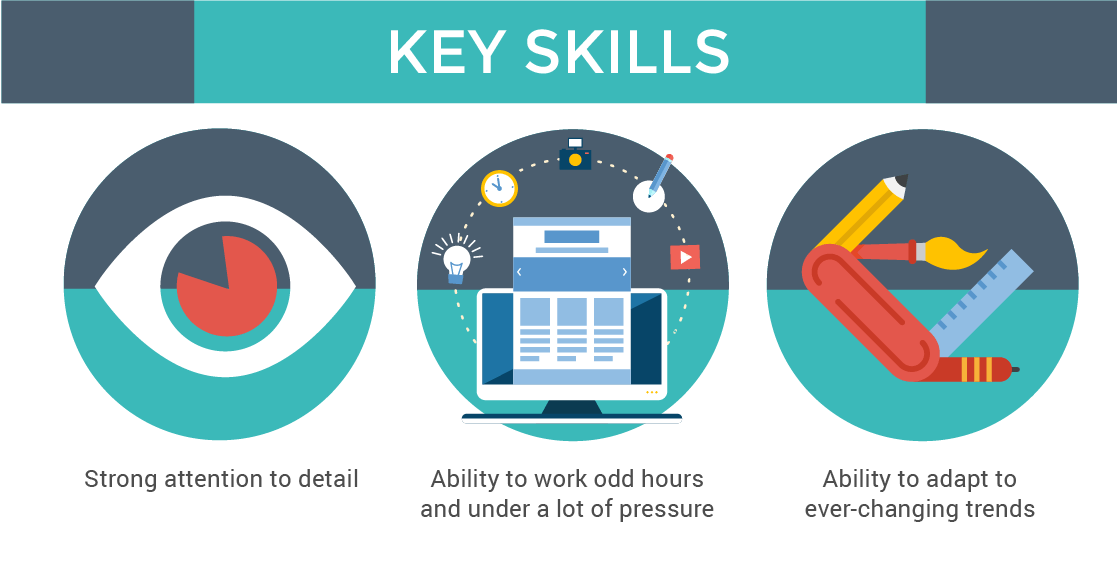 So, what skills do you need to thrive in a Design course? Here are some of the most crucial ones that you will need in order to perform well in a course in Design.
So, what skills do you need to thrive in a Design course? Here are some of the most crucial ones that you will need in order to perform well in a course in Design.
(a) Strong attention to detail
Design is a particularly meticulous field. Don’t be surprised if you find yourself among a group of hardcore perfectionists as your coursemates in a Design course.
If you’ve tried your hand at design before, you’ll realise that slight changes can bring significant changes to your visuals. So, be ready to find yourself paying intense attention to your visual assignments, from colour codes down to pixel counts.
(b) Ability to work odd hours and under a lot of pressure
Short deadlines, impractical demands and countless amendments.
These could possibly be your typical daily routine as a design student, and more so as a working designer. You’ll find yourself constantly struggling to draw the line between your creativity and rigid requirements set by your clients.
And unless you can decide when your creative eureka hits you, do expect to continuously toil with your Illustrator under stress at unusual hours.
(c) Ability to adapt to ever-changing trends
One of the more important traits being a design student is to be able to keep up with the trends, or even better, foresee trends.
With the creative industry constantly changing, a strong initiative to learn and an experimental attitude will certainly be a plus! Allow yourself to constantly embrace change and always keep a blank canvas so that your work will not turn habitual.
Remember that being authentic is essential in design.

#5. What Career Options Do You Have with a Design Degree?
Once you’ve completed your relevant Design Degree, you will have the right skills and hands-on experience to contribute to the working world.
Here are some of the career opportunities that you have as a Design graduate, depending on which area of Design that you choose to focus on.
| Field | Career Options |
|---|---|
| Interior Design |
|
| Multimedia Design |
|
| Fashion Design |
|
| Jewellery Design |
|
| Graphic Design |
|
| Animation Design |
|
| Industrial Design |
|
#6. Where Can You Study Design in Malaysia?
Interested to take up a Design course? Here are some of the most popular universities for Design in Malaysia.
Asia Pacific University of Technology & Innovation (APU)
Bukit Jalil, Kuala Lumpur
Intake
Mar, Jul, Sep, Nov
Tuition Fees
RM102,200
Get RM500 + RM300 Rebate when you enrol through EduAdvisor! T&C apply.






